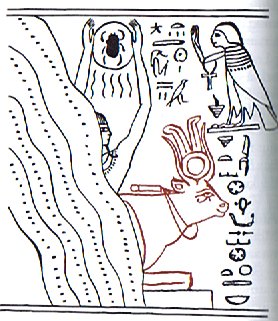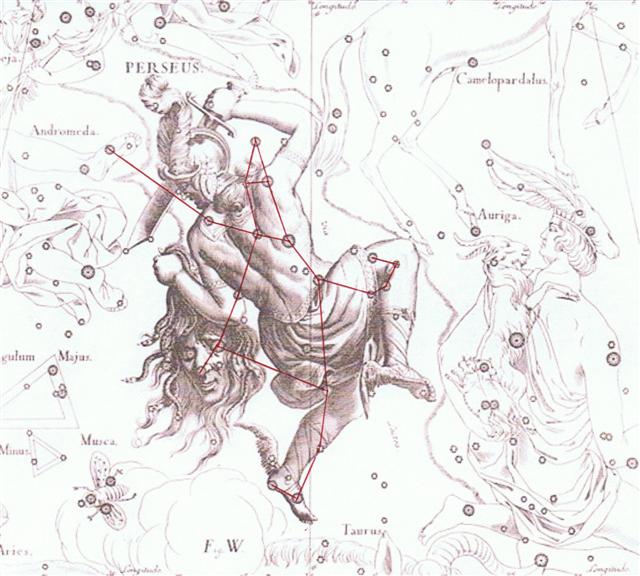My idea of arranging nakshatra dates and stars together with the glyphs in line Ca14 is based on my conviction that on the opposite side of the sky roof we should be able to read clues as to what is illustrated in Ca14. Phoenix is the mirror concept of Raven, etc. Logically I therefore ought to arrange also the glyphs at the nakshatra dates close to the glyphs in line Ca14 in order to enable better comparisons:
Glyph 184 corresponds to September 21 (264 = 80 + 184) and also to manzil day 128 (= 264 - 136 = 2 * 64). 264 (September 21) on one hand and 2 * 64 (Dshuba 10) on the other. The Moon night O-tua, which I have guessed should be reflected here, ought to begin already with haú in the preceding glyph, because the back side (tua) of the year should begin with day 365 / 2 = 182½, with 12h. Alchita, the first star of Raven, rose heliacally just after 182.6. Counting 184 + 180 = 364 leads us from September 21 (264) to March 19 (79). 264 + 180 - 365 = 79. There are 365 days in a year which precedes a leap year (where March 19 is day 79 instead of number 78 in the regular year). In a leap year 12h will be in March 20 because February 29 has corrected the 4 * ¼ = 1 day difference between 365¼ and 365. March 20 is also the astronomically on average correct day for the March equinox. 31 + 29 = 60 for January + February and then 20 days in March = 80. Thus September 20 (263, 12h) in the year before the leap year ought to be the beginning of the 'Otua' half of the year and March 20 (80, 0h) its end. 365 - 263 + 80 = 182 nights. This is quite understandable, because we are familiar with the idea of a 'year in straw' (winter) and a 'year in leaf' (summer). Raven brings winter and Phoenix brings summer, the time when Sun is 'absent' respectively 'present'. The perspective is only slightly shifted from our own Sun oriented view with summer = autumn equinox (September 22, 265) - spring equinox (March 21, 80) = 185 days and winter = 365 - 185 = 180 days. But we must also try to perceive the other side of the coin, when counting should be done according to the Moon year instead of the Sun year. The Phoenix constellation was beginnig to rise with the Sun 4 nights after March 9 and a week before March 20:
November 10 is day 314 = manzil day 6 * 29½ + 1 (= 178). 178 + 136 = 314. March 10 (70) had Kerb (τ Pegasi) rising heliacally in RA day 354 = 12 * 29½. 365 + 70 (March 10) - 314 (November 10) = 121. This number could correspond to the number of rainy winter days:
Year: 121 + 350 = 471 (= 150% * 314 = 16 * 29½ - 1). Summer: 364 - 121 = 243 (= 9 * 27). Summer: 471 - 243 = 228 (= 12 * 19). Spring: 364 - 228 = 136.
May 10 (130) had Algenib Persei rising with Sun 50 days from the March equinox and probably we should contrast this with Algenib Pegasi in March 23 (368 days from March 21 in the year before the leap year).
Sun light emerged from the side of Perseus and possibly light was generated also from the side of Pegasus. Once March 25 was the day of equinox. Furthermore, day 314 in the manzil calendar coincides with 5 days after March 21 in a leap year (451 - 314 = 137), when in rongorongo times the pair α and κ Phoenicis rose together with Sun:
When Gredi (α Capricorni) culminated in September 9 (in an ordinary year) it was day 252 = 3 * 84 = 36 weeks from January 1. I think the Moon seasons should be counted by using number 3. However, the corresponding manzil day Alterf 11 is number 116 = 4 * 29. Kerb is inside the Pegasus Square and the star κ Crateris (172.5) is - together with ι - inside the bowl of Crater:
In the Babylonian zodiac we can easily see how the Pegasus Square (Field) is mirrored in the rhomb of the Abyss (Crater):
| ||||||||||||||||||||||||||||||||||||||||||||||||||||||||||||||||||||||||||||||||||||||||||||||||||||||||||||||||||||||||||||||||||||||||||||||||||||||||||||||||||||||||||||||||||||||||||||||||||||||||||||||||||||||||||||||||||||||||||||||||||||||||||||||||||















